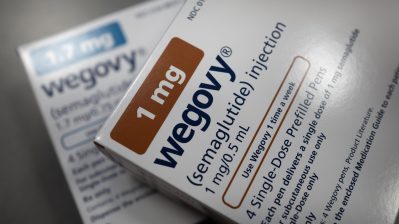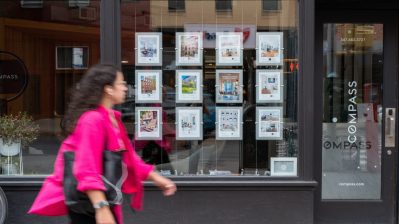Can fake chicken feed the world?
Jeremy Hobson: There’s a big meeting about meat going on in Chicago today. It’s the international meat, poultry and seafood convention and the story so far is that consumers are buying more meat now that the recovery is underway.
But the return of carnivorousness is putting pressure on food and water supplies and that’s leading some to the new and improved world of fake meat.
From the Marketplace Sustainability desk, Adriene Hill reports.
Adriene Hill: Chicken can be tasty.
Harold Huff: I love it.
Just ask Harold Huff, a researcher at the University of Missouri.
Huff: Flavor, feel, versatility. It’s great in casseroles.
The problem is, to make that chicken casserole, well you’ve got to have a live chicken — and that chicken needs water and grain to eat and a place to live. And it’ll have to be killed.
Or, maybe you don’t.
In a laboratory at the University of Missouri, a food extruder spits out long, thick ribbons of fake chicken. It’s made from a dry soy powder.
Huff: From dry feed in to product out, once it’s up running and stable can vary as little as 15 seconds.
A whole lot faster than growing a real chicken. Huff and Dr. Fu-Hung Hsieh have been working on making passable fake chicken for a decade and a half.
Huff: If it doesn’t feel right when a person chews it, if it doesn’t look right on the plate, people are turned off by that.
And so Huff and Hsieh had to figure out how to make their soy chicken not just taste like chicken but have the texture of real chicken and look like chicken, instead of a big gray blob. So they extruded and extruded and extruded, until they came up with a better analog chicken strip.
Now, more than 15 years later:
Ethan Brown: I just need another bowl of some sort?
Ethan Brown is cooking the mock chicken strips up with tomatoes, onions and spices to make fajitas. He and his company have partnered with the university to get Dr. Hsieh’s chicken to market. Brown thinks the demand for better fake meat is there — driven by health concerns, worries about how mass-farmed animals are treated, and the environment.
Brown: Climate change is a big issue. We had talked about, you know, the U.N. came out with a study saying 18 percent of the world’s greenhouse gas emissions are due to livestock.
Greenhouse gases are responsible for rising global temperatures. Brown serves up his fake-chicken fajitas that taste a whole lot like real chicken fajitas. Appetizing? Your call. But it points to a future with a whole lot less clucking.
I’m Adriene Hill for Marketplace.
HOST: Want to see the fake chicken? We’ve got a video and blog post here.
There’s a lot happening in the world. Through it all, Marketplace is here for you.
You rely on Marketplace to break down the world’s events and tell you how it affects you in a fact-based, approachable way. We rely on your financial support to keep making that possible.
Your donation today powers the independent journalism that you rely on. For just $5/month, you can help sustain Marketplace so we can keep reporting on the things that matter to you.


















